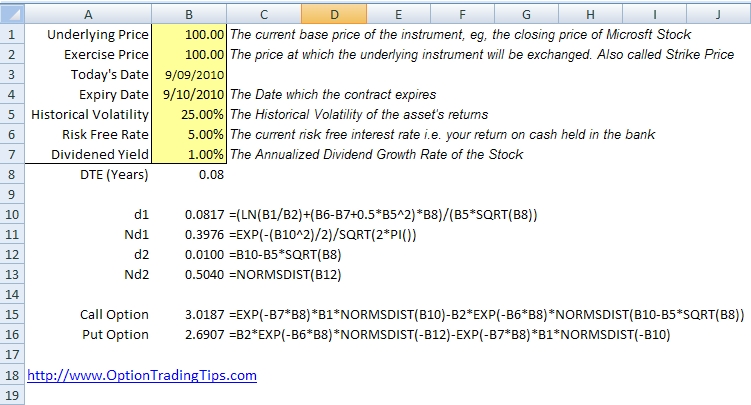Contents
Bulk modulus, poisson’s ratio and shear modulus are already discussed in our previous article. Elastic constants are those constants that determine the deformation produced by a given stress system acting on any material. If you are planning to avail a Home Loan, then it is crucial for you to understand under what conditions your bank is sanctioning the loan. You must understand each and every term written on the loan agreement or else you will end up choosing a lender who charges high interest or with tough terms and conditions. To avoid this, just log on to our website and understand the meaning of financial terms with the Financial Dictionary. Thus, the amount desired for a commodity is affected not only by its own price, but also by the prices of other items.
It is defined as- the ratio of shear stress to shear strain, and is denoted by 𝜂. The size of the deformation is proportional to the applied force i.e., for small deformations, Hooke’s law is obeyed. The object returns to its original shape after the removal of force i.e., the deformation is elastic for small deformations. The demand curve of relatively elastic demand is gradually sloping.

The consumers of insulin are diabetic patients who won’t deny buying if there is an increase in the prices. There can be various examples of goods that fall in this category. For example, the demand for refrigerators go high during festive seasons as the prices are slashed and people wait for it. A product’s demand would be “elastic” in case a small price variation causes a much more significant change in the demand. In other words, customers would demand significantly more or less in accordance with a small variation in price.
Modulus of Elasticity | Young’s Modulus: Define,Use,Calculus
Many other companies have also stressed that their products, from Starbucks iced coffee to Planet Fitness gym memberships, have remained in demand despite high inflation. People seem particularly willing to pay for experiences, like travel and sports events, even at higher prices, after being deprived of them under pandemic restrictions. Disney reported a 50 per cent jump in quarterly profit as business at its theme parks rebounded strongly. Those bodies which does not regain its original configuration at all on the removal of deforming force are called perfectly plastic bodies, e.g. putty, paraffin, wax etc. Thus, a change in price will affect the elasticity of a product’s demand. Also, it will have little effect on an inelastic product’s demand.

The correct answer is option 1, i.e. whatever the change in price, there is absolutely no change in demand. Elasticity is a measure of a variable’s sensitivity to a change in another variable, most commonly this sensitivity is the change in price relative to changes in other factors. The quantity requested for a product is affected by any change in the price of a commodity, whether it be a drop or an increase.
This assessment can be helpful in predicting consumer behaviour as well as big occurrences like an economic recession or recovery. Every day, as customers, we make choices that economists track. We may consume less of a good or none at all if its price rises and we can survive without it, there are many replacements, or both.
Poisson’s Ratio
The formula’s output determines the magnitude of the influence of a price adjustment on the amount required for a commodity. Certain fabrics are manufactured in such a way that they are elastic in nature. Spandex is a synthetic material that is the best example of fabrics exhibiting elasticity. https://1investing.in/ Spandex is used to make swimming suits and clothes for cyclists. But every material has its own limit for stretching beyond which it can not be stretched further is known as the elastic limit. A fun fact about elasticity is that rubber can be stretched to three times its original size.
You can calculate this change in demand by simply calculating the percentage change in quantity of demand divided by the percentage of one of the variables on which the demand of the product depends. As mentioned above in the blog, there are mainly two types of elasticity- Elasticity of Demand and Elasticity of Supply. Elasticity of demand is an economic measure of the sensitivity of demand relative to a change in another variable. The demand for a good or service depends on multiple factors such as price, income, and preference. Whenever there is a change in any of these variables it causes a change in the quantity demanded of the good or service. The price elasticity of demand, to use its full name, measures how sensitive buyers are to price changes.

In this, the consumers who spend their small portion of the income will have an inelastic demand. The goods on which the consumer spends a large portion of their income tend to have more elastic demand. Would you still report to work tomorrow if petrol prices rose by 30%?
For example, if there is a hike of $0.5 in the price of a cup of coffee, there are very high chances of a steep decline in the quantity demanded. In other words, the elasticity of demand is the percentage change in quantity demanded divided by the percentage change in another economic variable. Elasticity of Demand, on the other hand, specifically measures the effect of change in an economic variable on the quantity demanded of a product. There are several factors that affect the quantity demanded for a product such as the income levels of people, price of the product, price of other products in the segment, and various others. Economists attempt to quantify the degree to which demand is sensitive to changes in price for a particular good using the concept of price elasticity of demand.
Modulus of Elasticity Dimensional Formula
That means A hard material will have a high modulus of elasticity and flexible material will have a low modulus of elasticity. Financial Dictionary is a dictionary or database that contains the meaning of all financial terms. Financial Dictionary has been created to help anyone, interested in understanding financial terms.
- At the current price, which represents a 25% increase, it starts selling 2,500 pairs per month.
- The correct answer is option 1, i.e. whatever the change in price, there is absolutely no change in demand.
- If you have lingering doubts on any financial term, then all you must do is log on to our website and check out the Financial Dictionary.
- The fractional change in the dimension of a body is produced by the external stress acting on is called strain.
The Price Elasticity of Demand is a measure of the responsiveness of quantity sought when prices vary . Relatively elastic demand refers to the demand when the proportionate change in the demand is greater than the proportionate change in the price of the good. The numerical value of relatively elastic demand ranges between one to infinity. On the other hand, firms that sell inelastic goods that are must-have enjoy the luxury of setting higher prices without worrying about the decrease in demand and sales.
In a relatively inelastic demand, the proportionate change in the quantity demanded for a product is always less than the proportionate change in the price. When there is a sharp rise or fall due to a change in the price of the commodity, it is said to be perfectly elastic demand. When the value of elasticity is greater than 1.0, it means that the demand for that good or service is affected by the price. On the other hand, when the value of elasticity is less than 1.0, the demand for goods/services remains unaffected by the change in price. Inelastic means that the buying habit of consumers remains more or less the same, irrespective of the change in prices. Each of these explains the effect of changes on a specific variable.
Why do you need to refer a Financial Dictionary?
The degree of responsiveness of a change in demand for the product of the change in demand for a product due to a change in income is known as income of elasticity. We can conclude the blog by stating the fact that the demand for a commodity is affected by several factors and the three main types of elasticity of demand explains the effect of those factors. The demand curve for a perfectly inelastic demand is a vertical line i.e. the slope of the curve is zero. However, perfectly elastic demand is a total theoretical concept and doesn’t find a real application, unless the market is perfectly competitive and the product is homogenous. These three types of Elasticity of Demand measure the sensitivity of quantity demanded to a change in the price of the good, income of consumers buying the good, and the price of another good.
To better understand the working we should move to the next section of the blog. In this blog, we will be mainly discussing elasticity and its different types. Later in the blog, we will discuss the factors affecting the elasticity of demand.
. Income Elasticity of Demand (YED)
You can avoid this by understanding financial terms and make smart investment decisions. You can enter a word by copy & post, drag & drop, or by typing in the search box above to get the meanings of elasticity. Elasticity | Marathi dictionary translates English to Marathi and Marathi to English definition of elasticity elasticity words elasticity phrases with elasticity synonyms elasticity antonyms elasticity pronunciations. When increased interest rates lead to a reduction in private investment spending such that it dampens the initial increase of total investment spending is called crowding out effect.
An item is viewed as elastic if the amount of interest in the item changes radically when its cost increments or diminishes. On the other hand, an item is viewed as inelastic if the amount of interest of the item changes almost no when its cost vacillates. Elasticity is that property of the object by virtue of which it regain its original configuration after the removal of the deforming force. So here you have to know all aspects related to the modulus of elasticity or young’s modulus. If you have any doubt then you are free to ask me by mail or on the contact us page.
Similar to this, relatively inelastic supply happens when producers can only manufacture items by dividing their resources among a limited number of subpar alternatives. A perfectly inelastic demand is the one in which there is no change measured against a price change. An elastic demand is one that shows a larger fluctuation in the quantity demanded of a product, in response to even a little change in another economic variable.
Consider a Wire AB of length I and radius r to which normal force f is applied to increase its length to Δl. It is used to derive the relationship between stress and strain. If you want to invest in a financial product, you must understand various financial terms. Many financial intermediaries misguide you to make quick profits.
For example, if the price of a product falls by a significant amount then the demand of the product will rise as a result of the price fall. This means that certain products see an increase in demand with decrease in the price, which shows that the said change in the price has a direct effect on the demand of the commodity. It is defined as a change in the quantity of demand for one commodity to the change in the quantity of demand to other commodities is called cross elasticity of demand. Usually, these types of demand arise with the involvement of interrelated goods such as substitutes and complementary goods. In nature, there are no perfectly elastic or inelastic bodies.
In such a case, we will say that the price elasticity for petrol demand is inelastic. However, if this 5% rise causes a massive drop in petrol demand, then price elasticity for petrol demand shall be elastic. As companies raise prices to cover their own rising costs, they are making bets on elasticity. And when they talk about it, they are engaging in the time-honoured tradition of describing their actions in a way that Wall Street analysts readily understand but the general public often does not. When the proportionate change in demand exceeds the proportionate change in the good’s price, the demand is said to be relatively elastic. The constant of proportionality is known as the modulus of elasticity.

Recent Comments